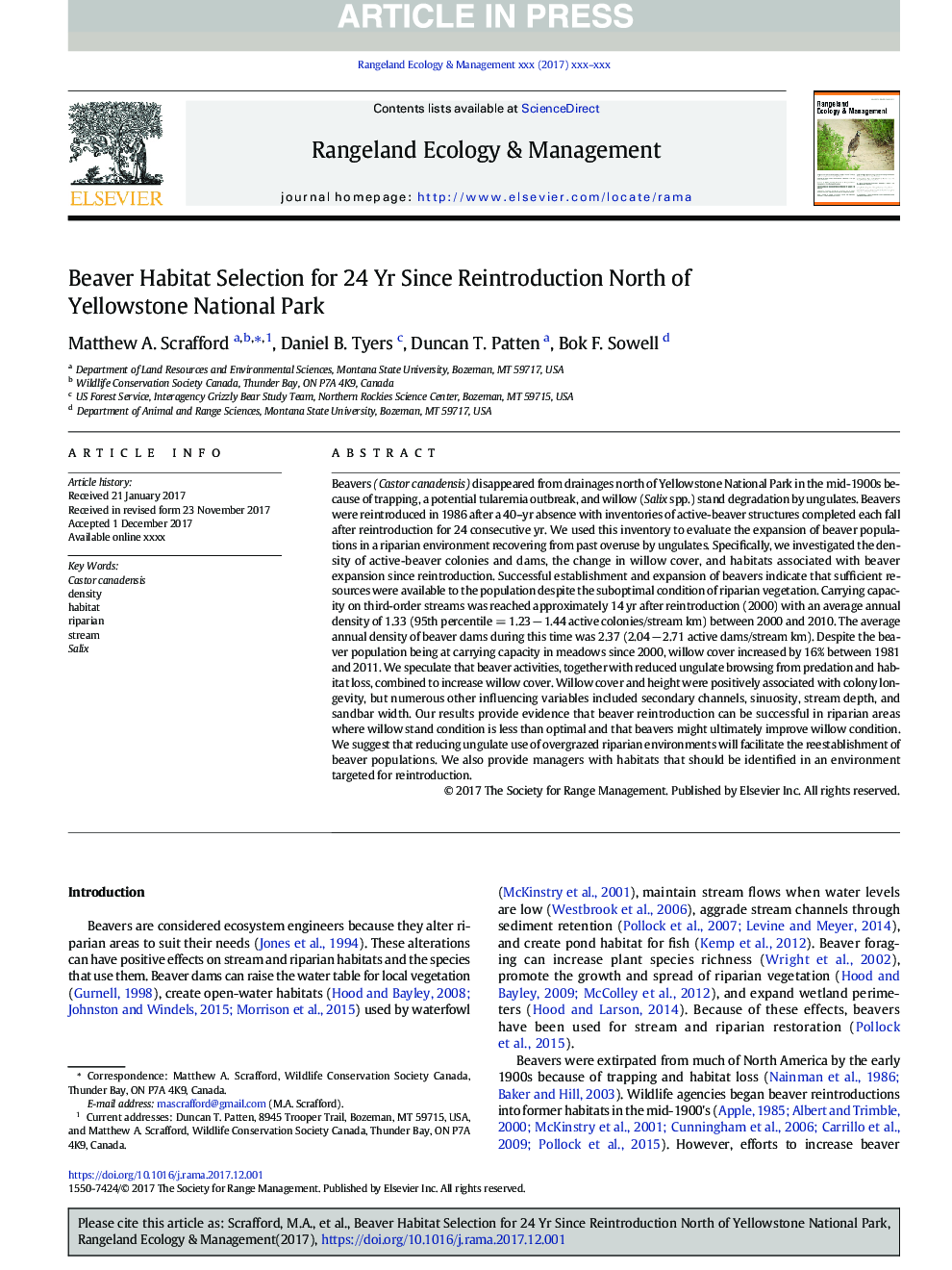| کد مقاله | کد نشریه | سال انتشار | مقاله انگلیسی | نسخه تمام متن |
|---|---|---|---|---|
| 8849643 | 1618645 | 2018 | 8 صفحه PDF | دانلود رایگان |
عنوان انگلیسی مقاله ISI
Beaver Habitat Selection for 24 Yr Since Reintroduction North of Yellowstone National Park
ترجمه فارسی عنوان
انتخاب محل برگزاری بیور برای 24 سال از زمان بازگشت مجدد در شمال پارک ملی یلو استون
دانلود مقاله + سفارش ترجمه
دانلود مقاله ISI انگلیسی
رایگان برای ایرانیان
کلمات کلیدی
موضوعات مرتبط
علوم زیستی و بیوفناوری
علوم کشاورزی و بیولوژیک
علوم کشاورزی و بیولوژیک (عمومی)
چکیده انگلیسی
Beavers (Castor canadensis) disappeared from drainages north of Yellowstone National Park in the mid-1900s because of trapping, a potential tularemia outbreak, and willow (Salix spp.) stand degradation by ungulates. Beavers were reintroduced in 1986 after a 40-yr absence with inventories of active-beaver structures completed each fall after reintroduction for 24 consecutive yr. We used this inventory to evaluate the expansion of beaver populations in a riparian environment recovering from past overuse by ungulates. Specifically, we investigated the density of active-beaver colonies and dams, the change in willow cover, and habitats associated with beaver expansion since reintroduction. Successful establishment and expansion of beavers indicate that sufficient resources were available to the population despite the suboptimal condition of riparian vegetation. Carrying capacity on third-order streams was reached approximately 14 yr after reintroduction (2000) with an average annual density of 1.33 (95th percentile = 1.23 â 1.44 active colonies/stream km) between 2000 and 2010. The average annual density of beaver dams during this time was 2.37 (2.04 â 2.71 active dams/stream km). Despite the beaver population being at carrying capacity in meadows since 2000, willow cover increased by 16% between 1981 and 2011. We speculate that beaver activities, together with reduced ungulate browsing from predation and habitat loss, combined to increase willow cover. Willow cover and height were positively associated with colony longevity, but numerous other influencing variables included secondary channels, sinuosity, stream depth, and sandbar width. Our results provide evidence that beaver reintroduction can be successful in riparian areas where willow stand condition is less than optimal and that beavers might ultimately improve willow condition. We suggest that reducing ungulate use of overgrazed riparian environments will facilitate the reestablishment of beaver populations. We also provide managers with habitats that should be identified in an environment targeted for reintroduction.
ناشر
Database: Elsevier - ScienceDirect (ساینس دایرکت)
Journal: Rangeland Ecology & Management - Volume 71, Issue 2, March 2018, Pages 266-273
Journal: Rangeland Ecology & Management - Volume 71, Issue 2, March 2018, Pages 266-273
نویسندگان
Matthew A. Scrafford, Daniel B. Tyers, Duncan T. Patten, Bok F. Sowell,
